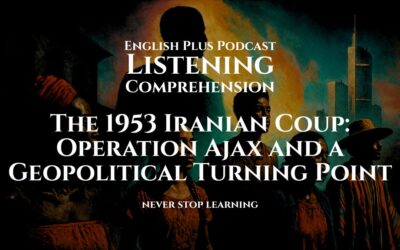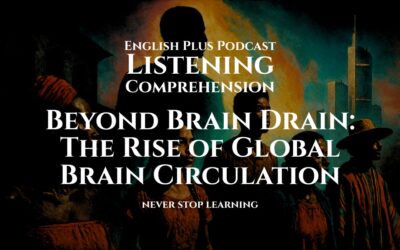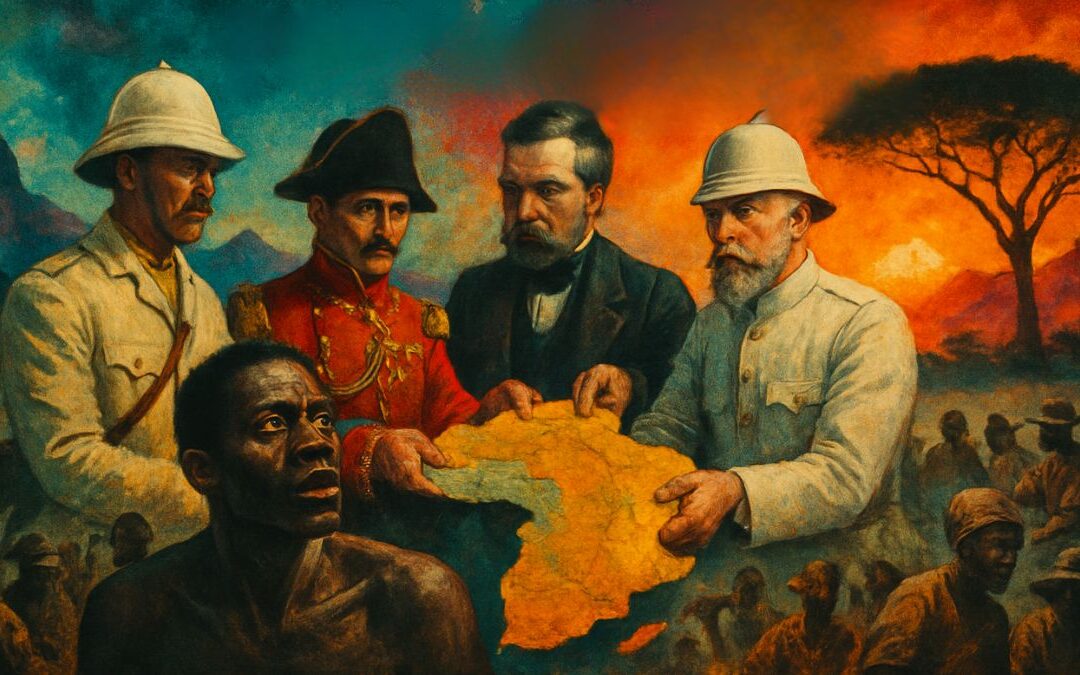Introduction
Welcome to this listening practice session designed for international exam preparation. Today’s exercise focuses on “Understanding International Trade Agreements.” As you listen, pay attention to the speaker’s tone, the clear explanation of complex concepts, and the use of transitional phrases to move between ideas. One useful tip is to note how the narrator explains technical terms in simple language and uses examples to illustrate abstract concepts. This approach is very effective in exams such as the SAT, TOEFL, and IELTS. Enjoy the narrative and remember that every detail you catch will help you build stronger listening and comprehension skills.
Listening Practice
Listening Script: Please don’t read the script before you listen and take the quiz
International trade agreements are fundamental tools that shape the economic relationships between nations. These agreements serve as the framework for how countries exchange goods and services, negotiate tariffs, and set common standards for trade practices. In today’s globalized world, understanding these agreements is essential, as they impact everything from the price of everyday goods to the broader economic policies of nations.
The journey into international trade agreements begins with the recognition that no nation exists in isolation. With the rise of globalization, countries have increasingly looked to collaborate in order to benefit from shared resources, technology, and market access. Trade agreements are structured to remove barriers, such as tariffs and quotas, that can hinder the smooth flow of commerce. By negotiating these agreements, nations aim to create win-win situations where each country gains access to new markets, improves efficiency, and enhances competitiveness.
Historically, the concept of trade agreements can be traced back to ancient times when merchants traveled along the Silk Road, exchanging goods and ideas. However, the modern system of trade agreements emerged after World War II, with organizations like the General Agreement on Tariffs and Trade (GATT) paving the way for the establishment of the World Trade Organization (WTO). These institutions helped to codify the rules of international trade and provided a platform for dispute resolution. Over the decades, various bilateral, regional, and multilateral trade agreements have been developed to meet the evolving needs of the global economy.
One of the key features of international trade agreements is that they are designed to be mutually beneficial. For instance, when two countries enter into a free trade agreement, they agree to lower or eliminate tariffs on a wide range of goods. This reduction in trade barriers allows consumers to enjoy lower prices and a greater variety of products. Moreover, businesses benefit from reduced costs and expanded markets, which can lead to increased innovation and economic growth. In this way, trade agreements not only facilitate commerce but also stimulate economic integration between countries.
Trade negotiations, however, are complex and often involve lengthy discussions over multiple issues. These negotiations require a deep understanding of each country’s economic interests, political environment, and regulatory framework. Negotiators must balance competing priorities, such as protecting domestic industries while promoting competition and efficiency. The process is often marked by intense debates, compromises, and sometimes even disputes. Yet, the ultimate goal remains the same: to craft agreements that support sustainable economic development and fair trade practices.
One illustrative example of a successful trade agreement is the North American Free Trade Agreement (NAFTA), which was later replaced by the United States–Mexico–Canada Agreement (USMCA). These agreements significantly altered the economic landscape in North America by reducing tariffs and creating a more integrated market. Businesses in these countries found new opportunities for collaboration, and consumers benefited from a broader array of goods at competitive prices. While these agreements are not without controversy, they underscore the importance of trade pacts in fostering economic growth and regional stability.
Another important aspect of international trade agreements is the role they play in setting standards. Beyond reducing tariffs, these agreements often include provisions on intellectual property rights, labor standards, environmental protection, and dispute settlement mechanisms. Such provisions help to ensure that trade is conducted fairly and that participating nations adhere to common rules. By establishing these standards, trade agreements contribute to the creation of a level playing field in global commerce, which in turn promotes trust and cooperation among trading partners.
Despite the clear benefits, international trade agreements are not without challenges. One of the primary concerns is the potential for domestic industries to be adversely affected by increased competition. Governments must carefully consider how to support industries that may struggle to compete on a global scale while still honoring the commitments made under international agreements. This balancing act often requires the implementation of adjustment policies, such as retraining programs for workers and subsidies for vulnerable sectors. In addition, trade agreements can sometimes lead to political tensions, particularly when the benefits of free trade are unevenly distributed across different segments of society.
Technological advancements have also had a profound impact on the way trade agreements are negotiated and implemented. Digital commerce, intellectual property, and data flows are now central issues in many modern trade agreements. As economies become more digitized, trade negotiators are challenged to create rules that address the complexities of the digital age. This includes ensuring that the benefits of technology are shared widely while protecting the privacy and security of consumers. The rapid evolution of technology continues to reshape the landscape of international trade, necessitating ongoing updates and revisions to existing agreements.
Looking ahead, the future of international trade agreements appears to be shaped by an increasing emphasis on sustainability and inclusivity. As the world grapples with climate change and economic inequality, new agreements are being designed with environmental and social considerations in mind. For example, provisions aimed at reducing carbon emissions and promoting renewable energy are becoming more common. This shift reflects a broader recognition that economic growth must be balanced with the need for sustainable development and social equity.
In conclusion, international trade agreements are much more than documents that outline tariff reductions and market access rules. They are complex instruments that facilitate economic integration, foster innovation, and promote fairness in global commerce. By lowering trade barriers and setting common standards, these agreements enable countries to work together in ways that drive mutual growth and stability. While challenges remain, particularly in terms of protecting domestic industries and addressing new technological realities, the benefits of well-structured trade agreements are undeniable. As you listen to this narrative, consider how these agreements shape the world around you and influence the economic policies that impact everyday life. The future of global commerce depends on the ability of nations to negotiate and implement effective trade agreements that balance national interests with the imperatives of global integration and sustainability.
Keywords and Phrases for Advanced English Learners
International Trade Agreements:
Legally binding arrangements between countries to govern trade policies and practices. In the listening script, these agreements are described as tools to reduce tariffs and foster global commerce.
Global Commerce:
The exchange of goods and services on an international scale. The script highlights how trade agreements enable a more integrated global market.
Economic Policy:
A set of strategies adopted by governments to influence economic conditions. In the narrative, trade agreements are linked to broader economic policies that aim to balance growth and fairness.
Trade Negotiations:
The process by which countries discuss and settle the terms of trade agreements. The script explains how these negotiations require balancing various national interests.
Tariffs:
Taxes imposed on imported goods to protect domestic industries. Reducing tariffs is a major goal of the trade agreements discussed.
Trade Blocs:
Groups of countries that join together to promote free trade among themselves. The narrative references examples like NAFTA to illustrate regional economic integration.
Market Access:
The ability for a country’s goods and services to enter another country’s market. Trade agreements aim to enhance market access for participating nations.
Economic Integration:
The process by which countries coordinate their economic policies and practices to form a unified market. The script emphasizes that integration fosters mutual growth.
Free Trade:
A policy where countries allow goods and services to move across borders without restrictive tariffs or quotas. Free trade is a key objective of many international agreements.
Global Economy:
The interconnected system of trade, finance, and industry that spans the world. The script shows how trade agreements impact the global economy by promoting sustainable and fair economic relations.
Each of these keywords is central to understanding the narrative on international trade agreements. By familiarizing yourself with these terms, you can build a stronger vocabulary and enhance your listening comprehension skills for international exams. Enjoy your practice and remember: every new term brings you one step closer to mastering advanced English listening skills!










0 Comments